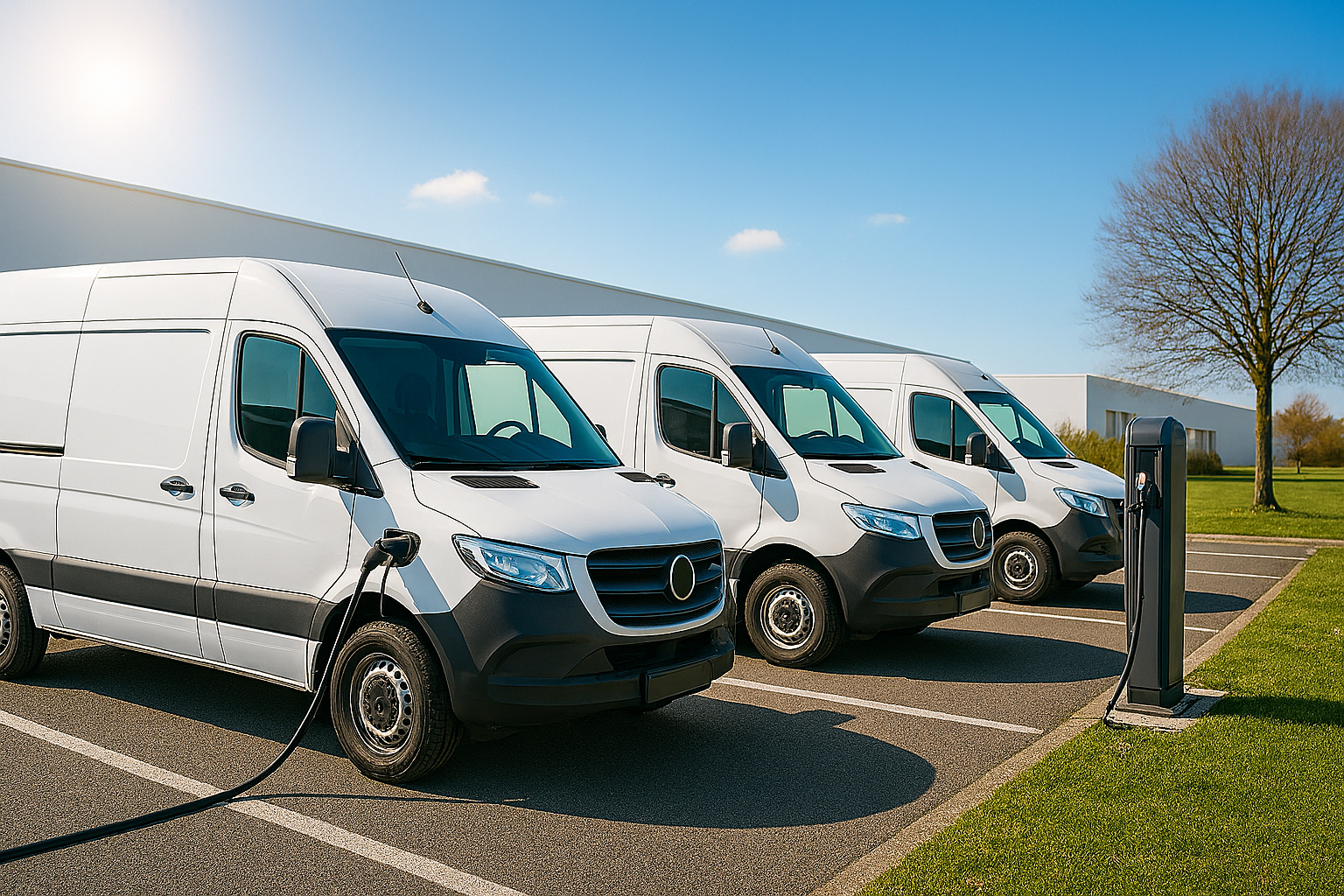Delivery Fleet EV Charging: Solutions for Fast Electrification


Delivery fleets are at the front lines of the EV transition. Whether you’re managing vans for e-commerce, groceries, couriers, or B2B logistics, the shift to electric is no longer a question of if but how soon.
But transitioning from gas or diesel vehicles to electric comes with one major hurdle: delivery fleet EV charging. The ability to charge quickly, reliably, and affordably can make or break your fleet’s uptime, profitability, and sustainability goals.
In this article, we break down the most viable EV charging options for delivery fleets, key considerations, and how new technologies like mobile, off-grid chargers are reshaping the landscape.
Unlike personal EVs or commuter cars, delivery fleets operate under tight schedules, with multiple stops and minimal dwell time. Vehicles often leave early, return late, and need to be fully charged for the next shift.
Challenges unique to delivery fleet EV charging include:
Depot EV charging or warehouse EV fleet charging is ideal for return-to-base fleets like parcel, grocery, or e-commerce vans. Vehicles charge overnight using Level 2 or DC fast chargers installed at a central depot. However, this requires upfront investment, utility upgrades, and often a long permitting process.
Best for: Mid-sized fleets with consistent return patterns
Public DC fast charging stations offer flexibility for range extension during the day but aren’t ideal as a primary solution. High costs, limited availability, and lack of access for fleet vans make it difficult to rely on this model at scale.
Best for: Regional or decentralized delivery vehicles
Some delivery networks (e.g. gig-based models or decentralized last-mile services) rely on drivers EV charging at home. This can work if you have consistent driver-vehicle assignments and a way to reimburse energy costs. But it introduces variability in access and energy tracking.
Best for: Franchise-style or gig economy fleets
Mobile and off-grid EV charging systems are emerging as a highly flexible solution especially for delivery fleets operating in urban, leased, or grid-constrained locations. These chargers are powered by clean fuels like renewable natural gas (RNG) or use battery storage, and can be deployed in days. Off-grid EV charging usually in a shape of portable EV chargers, on a trailer such as L-charge can support rapid EV deployment without waiting on grid.
They allow charging to happen:
Best for: Fleets in urban areas, new pilot programs, or utility-constrained sites
If grid connection delays, space limitations, or high infrastructure costs are slowing down your EV rollout, L-Charge offers a better way.
Our mobile, ultra-fast EV chargers are powered by RNG and require zero grid connection. That means:
Whether you operate from a leased warehouse, an urban delivery hub, or a decentralized model, L-Charge helps you charge where and when it matters keeping your electric delivery fleet moving.
Explore Charging as a Service →
What’s the best way to charge a delivery fleet?
Depot charging is common, but fleets are increasingly turning to mobile and off-grid EV charging solutions to avoid grid delays and reduce upfront costs.
Can delivery vans use public EV charging stations?
They can, but it’s not ideal. Public chargers may be too slow, unavailable, or poorly located for consistent fleet use.
How long does it take to install charging infrastructure for a delivery fleet?
Grid-tied charging can take 12–36 months. Mobile, off-grid chargers from providers like L-Charge can be deployed in 2–4 weeks.
What’s the most flexible EV charging solution for delivery fleets?
Off-grid EV charging powered by RNG or batteries is highly flexible especially for fleets that rent depots or operate in cities with utility constraints.
Is home charging a good solution for last-mile fleets?
It can work for gig-style models, but it lacks central control, and energy reimbursement can be difficult to manage at scale.